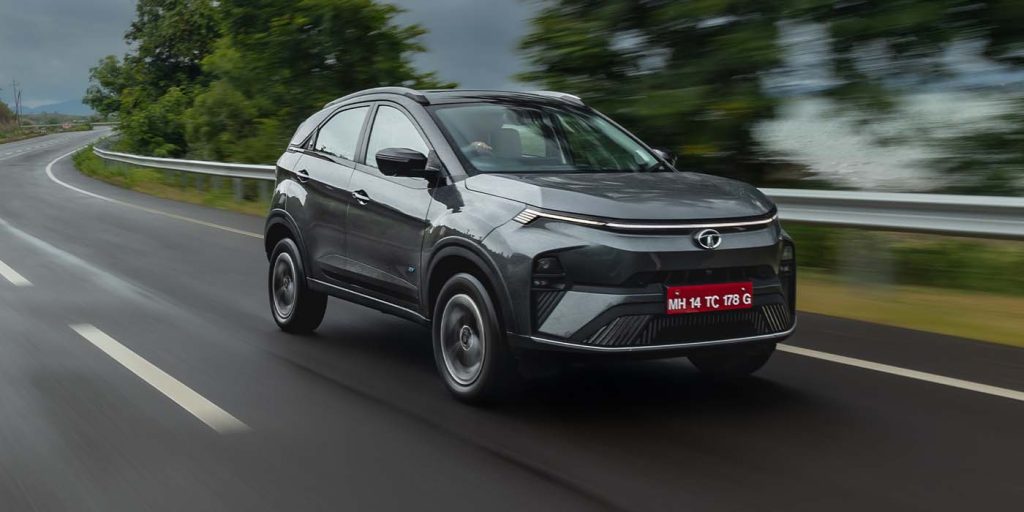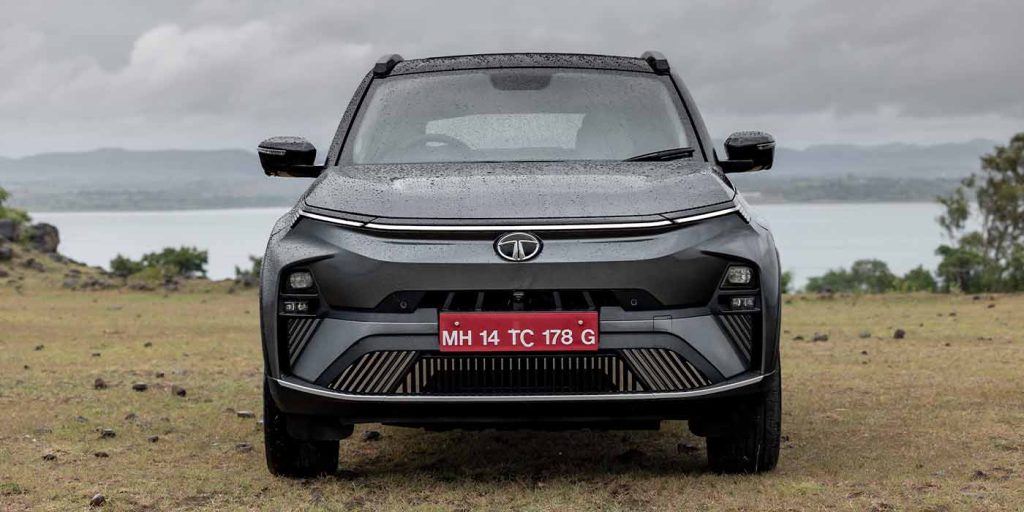
Tata Motors has introduced the latest refresh of its flagship Nexon.ev, complete with some notable technological upgrades. While this crossover SUV might not blow every consumer away with its specs, its price tag starting below $18,000 beckons a second look. Additionally, the fact that this ultra-affordable EV offer vehicle-to-load (V2L) capabilities makes us wonder: Why isn’t every single automaker offering this technology yet?
Tata Motors is a global automaker based out of Mumbai, India, approaching 80 years in developing and assembling automobiles, trucks, vans, and buses. In addition to several joint ventures around the globe, Tata Group wholly-owns Jaguar Land Rover.
While Tata has been around for decades, it, like many, just started delving into electrification the past few years. That journey began with the Nexon.ev, which first debuted in 2020 and has become a staple of Tata’s EV lineup.
The Nexon has since been joined by Tigor.ev designed with capabilities specifically for taxi drivers, as well as the Tiago.ev – advertised as Tata’s $10,000 electric car – which also ended up used in a huge contract between Tata and Uber. While other competitors may be able to beat Tata Motors in performance, its much more difficult to match its prices.
Today, the company shared details of a refresh to the aforementioned Nexon.ev – which now features new advanced technologies like V2L and V2V capabilities.
Tata Motors Nexon.ev delivers affordable V2L capabilities
Earlier today, Tata Passenger Cars launched the latest version of its Nexon.ev – a single-motor compact SUV capable of up to 465km (289 mi) of range (MIDC cycle). The higher range trim of the EV can travel 0-100 km/h (0-62 mph) in 8.9 seconds, and takes 56 minutes to charge 10-80% on a 50 kW DC fast charger.
No, these specs aren’t necessarily awe inspiring at first glance compared to other EVs, but there’s more to the story here to consider. First, consider the asking price for this new vehicle – INR 14.74 lakhs. That translates to about $17,445 in the US. Here we are frothing at the mouth at GM’s vow to deliver the Chevy Equinox EV for about $30,000.
Better yet, the Nexon.ev comes equipped with vehicle-to-load capabilities, meaning it can power your devices, appliances, or even charge other EVs (vehicle-to-vehicle or V2V). Tata’s managing director of passenger vehicles Mr. Shailesh Chandra spoke to the EV’s arrival and next-gen capabilities:
EV customers constitute a unique community that is fast growing and distinguished by their evolved choices, hunger for next-gen technology, expectations of personalized experiences, and commitment to a greener tomorrow. The Nexon.ev aptly fulfills their evolving, astute preferences with a technologically advanced, on-the-move solution that seamlessly blends with their contemporary way of life. This groundbreaking vehicle isn’t just pushing boundaries; it is rewriting the rulebook by addressing several unstated expectations of customers as well. The sleek, futuristic, and digital design; an unwavering commitment to safety and sustainability; and smart lifestyle features that are best-in-class and only seen in vehicles several segments above, makes Nexon.ev a truly aspirational electric SUV.
In terms of platform technology, perhaps the Nexon.ev is something other automakers should aspire to. To date, we’ve only seen a handful of EV models sold in the US offer V2L capabilities, like anything on Hyundai Motor Group’s E-GMP platform for instance, including the IONIQ 6.
Starting in the $40,000s, HMG’s EVs are relatively affordable for the advanced tech you get, but are still more than double the price of the Nexon.ev. That being said, we can’t help but wonder why more automakers aren’t offer V2L capabilities in their EVs.
Tata Motors is offering on a 400V platform with a mere 40.5 kWh battery pack. There are factors that that go into pricing an EV, and as previously stated, most other compact SUVs offer better specs than the Nexon.ev. However, If Tata is able to deliver V2L capabilities for such a low price, it’s easy to argue such technology wouldn’t cost automakers that much to offer on their own EV architecture.
We are already sure to see the tech become more common moving forward, but it’s a safe argument that if Tata Motors can offer it in an $18,000 EV, pretty much any EV can also support the capabilities. That’s the future we want someday.
Oh, and more EVs under $20k would be nice too. Thanks.




